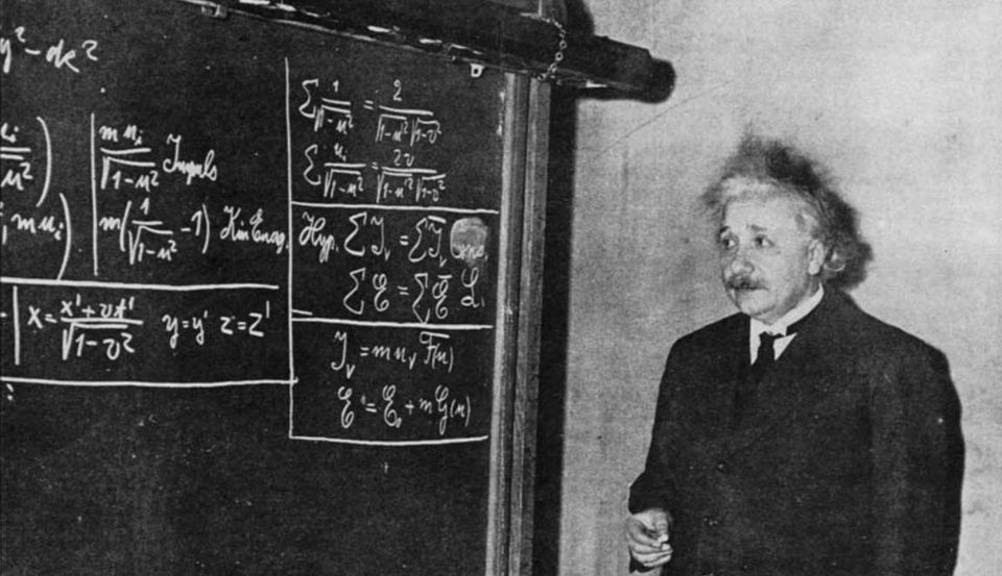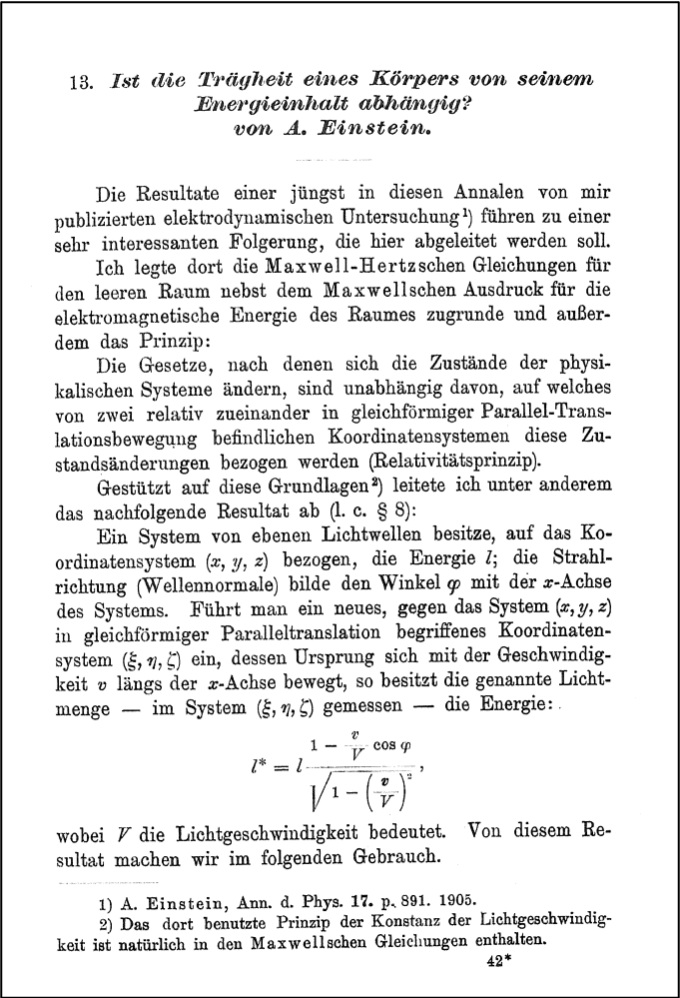A Gentle Explanation of E= mc²
Deriving Einstein’s Famous Mass-Energy Equivalence Formula

The mass-energy equivalence formula E = mc² defines a relationship between the mass m and the energy E of a body in its rest frame (the rest frame is the frame of reference where the body is at rest). The square of the speed of light is an enormous number, and therefore a small amount of rest mass is associated with a tremendous amount of energy.

The Annus Mirabilis papers
While still working as a patent clerk, Einstein published four revolutionary papers, all of them containing major contributions to the foundations of modern physics:
- In the first paper, he explained the so-called photoelectric effect, the emission of electrons when light hits an object. He also showed that energy consists of discrete packets (photons).

- The second paper explained Brownian motion, the random motion of particles suspended in a medium. This paper led the physics community to accept the atomic hypothesis.

- In the third paper, Einstein introduced his theory of special relativity. For a very quick introduction to some of the features of special relativity see two of my recent articles:
Why Clocks in Motion Slow Down According to Relativity Theory
- In the fourth paper, Does the Inertia of a Body Depend Upon Its Energy Content? (Ist die Trägheit eines Körpers von seinem Energieinhalt abhängig?), which will be the focus of the present article, Einstein developed the principle of mass-energy equivalence E = mc² (leading eventually to the discovery of atomic energy).

The Postulates of Special Relativity
Let us quickly recall the two postulates of special relativity:
- All the laws of physics are the same in all inertial reference frames.
- The speed of light in a vacuum is the same in all inertial reference framesregardless of the motion of the observer or the source.
Redefining Momentum
This section will show that the classical (nonrelativistic) linear momentum p=mv, which has a corresponding conservation law in classical mechanics, must be redefined for the momentum conservation to continue valid in relativistic regimes.
A Bird’s Eye View of Lorentz Transformations
If in an inertial system S the coordinates of an event E are given by (t, x, y, z), in a moving frame S’ with constant velocity v with respect to the first inertial system, the same event E will have coordinates (t’, x’, y’, z’) given by:


These relations are called Lorentz transformations (named after the Dutch physicist Hendrik Lorentz).
Minkowski Diagrams
The spacetime in special relativity is represented graphically by Minkowski diagrams, two- or three-dimensional graphs with one or two space dimensions and one time dimension (see Fig. 7).

Two important concepts are represented in a Minkowski diagram:
- Events: An event is an instantaneous occurrence, represented by a point (t, x, y).
- World line: a line representing the motion of an object through time. The slope of the world line is the reciprocal of the velocity of the moving object (since by convention the time axis is the vertical one).

Proper Time and Proper Velocity
Proper time τ is the time your clock registers as you move, say, inside a plane. More specifically, it is the time measured by a clock following a world line in spacetime. It is related to the external time (say, the time measured by a clock on the ground) by the following relation:

The proper velocity η = dl/dτ is defined using the external distance and the propertime. Since dl/dτ = dl/dt × dt/dτ = v × dt/dτ, Eq. 2 above gives us:

For example, if you are on a plane, η measures the ratio between the distance it takes for the plane to complete the trip (measured by an observer on the ground) and the time aboard the plane (registered on your watch).
Eq. 3 is the spatial part of the proper velocity. The 0-th component is:

Relativistic Momentum
In nonrelativistic (or classical) mechanics, the momentum is equal to the (constant) mass times the velocity p = mv. However, in the relativistic domain, the law of conservation of classical momentum violates the principle of relativity (it is straightforward to find a pair of reference frames S and S’ where the total momentum is conserved in S and not in S’ or vice-versa).
To recover the validity of the principle of relativity, we must redefine the momentum’s expression. This turns out to be fairly easy: we simply use the relativistic momentum below instead of the classical momentum:

Rest Energy
The 0-th component of Eq. 5 is given by

In his 1905–1906 papers, Einstein called relativistic mass the quantity:

and m he called rest mass. Nowadays, the terminology has changed and relativistic energy is defined by:

Now, notice that even if the object is not moving (v=0), it still has nonzero relativistic energy. This is the rest energy of the object:

To obtain the kinetic energy we subtract the rest energy from the total energy:

Thanks for reading and see you soon! As always, constructive criticism and feedback are always welcome!
My Linkedin posts, my personal website www.marcotavora.me, and my Githubprofile have some other interesting content about physics and other topics such as mathematics, machine learning, deep learning, finance, and much more! Check them out!





